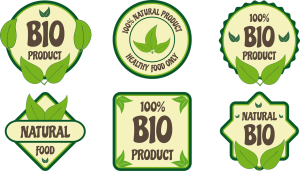The concept of ethical consumption is becoming increasingly popular, especially among younger generations. In the context of sustainability, there has been a push for more ethical materials used with the end goal being to cease the proliferation of harmful waste. However, while younger generations move quickly, corporate marketing is always just behind them. In order to ease the minds of their targets, companies employ tactics known as greenwashing. Essentially, products are advertised as environmentally friendly using fallacious and misleading information about their production. A prime example of this is in fragrances. They often boast about characteristics such as ‘natural fragrances’. Not only is this label potentially misleading, but is generally confusing to the average patron and does not actually delve into what constitutes as natural. This also does not exclude them from using unsustainable chemicals such as hydrofluorocarbons, which have been shown to damage the ozone layer.

Very often marketing is used by corporations to co-opt movements with good intentions. Frankly, I do not believe enough is done to prevent this from taking place. These companies are consistently able to do this within the bounds of the law, and as such there are new methods being implemented to prevent it. As of January 1st, 2024, the state of California has adopted an ‘anti-greenwashing’ measure. Essentially, it does work to regulate the voluntary carbon market as well as requiring more transparency between companies and patrons about the products being produced and consumed. This is certainly a step in the right direction, although, based on its description, it would need patrons to take a more active approach in researching the companies they engage with. In that regard, I believe more can be done to push this information out so that customers can make more informed decisions and put less of the onus on them. Overall, the goal should be to disallow corporations from misleading their markets, and this new law should definitely help with that. I hope that this is the beginning of a chain reaction across the United States and abroad to increase transparency, and hold corporations more accountable for what they produce.
Sources:
January. 2024. “New California Anti-Greenwashing Law Goes Live on January 1, 2024 – What You Need to Know If You Make Certain ‘Green’ Claims | Perspectives & Events | Mayer Brown.” Mayerbrown.com. 2024. https://www.mayerbrown.com/en/perspectives-events/publications/2023/12/new-california-antigreenwashing-law-goes-live-on-january-1-2024–what-you-need-to-know-if-you-make-certain-green-claims#:~:text=The%20new%20%E2%80%9Canti%2Dgreenwashing%E2%80%9D,claims%20and%20the%20use%20of.
Nations, United. 2023. “Greenwashing – the Deceptive Tactics behind Environmental Claims | United Nations.” United Nations. United Nations. 2023. https://www.un.org/en/climatechange/science/climate-issues/greenwashing.
“Reducing Hydrofluorocarbon (HFC) Use and Emissions in the Federal Sector through SNAP | US EPA.” 2014. US EPA. December 9, 2014. https://www.epa.gov/snap/reducing-hydrofluorocarbon-hfc-use-and-emissions-federal-sector-through-snap#:~:text=Hydrofluorocarbons%20(HFCs)%20are%20greenhouse%20gases,fire%20extinguishing%20systems%2C%20and%20aerosols..